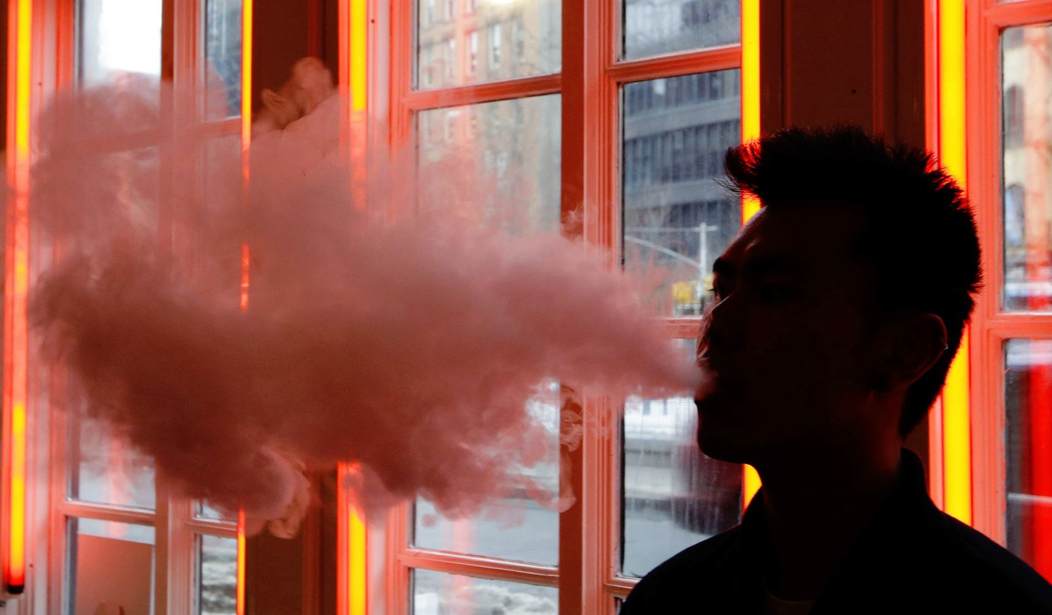Another year and another round of alarmism surrounding the so-called youth vaping epidemic. The Centers for Disease Control and Prevention (CDC) recently published the results from the 2021 National Youth Tobacco Survey (NYTS) and despite the great news that vaping rates among youth have significantly decreased, both the CDC and U.S. Food and Drug Administration (FDA) are using the opportunity to further mislead and poison the discussion about tobacco harm reduction.
According to the NYTS, in 2021 only 11.3 percent of high school students and 4.7 percent of middle school students reported current e-cigarette use – or having used an e-cigarette on at least one occasion in the 30 days prior to the survey. Of these, the agency claims that 27.6 percent of high school students and 8.3 percent of middle schoolers reported daily use. The FDA mistakenly claimed that “1 in 4 high school students reported daily use.”
These statistics are based off current users – not all students. So, in fact, in 2021, only 3.1 percent of all high school students and less than 1 percent of all middle school students reported daily use of vapor products. That’s far from an epidemic, which is defined by the Merriam-Webster dictionary as “affecting or tending to affect a disproportionately large number of individuals within a population.”
This isn’t the first time that public health agencies releasing inflated numbers regarding daily use of e-cigarettes by youth. In 2020, the CDC declared that 22.5 percent of high schoolers used e-cigarettes every day, as well as 9.4 percent of middle schoolers. Again, these percentages are a percent of the population defined as current e-cigarette users. Among all students in 2020, only 4.4 percent of high school students and less than 1 percent of middle school students reported daily e-cigarette use.
Recommended
Ever since 2018 when then-U.S. surgeon general Jerome Adams declared a “youth vaping epidemic,” adults’ access to tobacco harm reduction products including e-cigarettes has been under threat by these same federal agencies, as well as local, state, and federal lawmakers. This shouldn’t come as any surprise, after all are these same agencies took advantage of the 2019 spat of vaping-related lung injuries, which were found to be linked to illicit vapor products containing tetrahydrocannabinol (THC) – or the psychoactive ingredient in marijuana. The CDC waited several months before sounding the alarm on these black market products and simply told the public to refrain from all e-cigarette products.
And the real shame is that adults in localities ranging from San Francisco to Philadelphia and states including Massachusetts, New Jersey, New York, and Rhode Island, are unable to legally purchase flavored vapor products, yet have unabated access to combustible cigarettes.
While youth use is a cause of concern, lawmakers are actively ignoring the science and acting on inflated numbers. If this was any other consumer product in the world, organizations like the FDA and CDC, and even the World Health Organization, would be demanding that leaders work with manufacturers to reduce harms.
We see this evidenced in many other consumer goods including automobiles, prescription drugs, and other risky products and behaviors. Yet these very public health groups are actively stopping tobacco manufacturers from even introducing safer alternatives to combustible cigarettes and conflating thousands of small mom and pop businesses as being the ever-touted “Big Tobacco.”
E-cigarettes were first introduced in the United States in 2007. From the onset the FDA attempted to regulate the novel products and would eventually get court approval to regulate them as a tobacco product in 2011. In the same year, the first major tobacco company purchased an e-cigarette line. In 2012, two other tobacco companies would introduce their own vaping devices. But the surge of e-cigarettes in the US grew “between 2009 and 2012 [when] retail sales of e-cigarettes expanded to all major markets.” In other words, e-cigarettes sales were already growing before Big Tobacco got involved. In 2015, before FDA’s deeming regulations, “more than 8,500 vape shops [had] sprung up in strip malls and stand-alone stores across the country.” Many of these do not sell any leading tobacco companies’ e-cigarettes and are owned by former-smokers-turned-vapers.
Policymakers should be investigating the taxpayer funded agencies’ agendas and why the most recent data is being coupled with calls by the same agencies to further restrict adult access to tobacco harm reduction products. Despite the rhetoric, e-cigarettes are significantly less harmful than combustible cigarettes and twice as effective as traditional FDA-approved nicotine replacements at getting people to quit smoking. Even better, youth vaping is at a new low, which is an indicator that retailers are being responsible in preventing youth access.
Lindsey Stroud is Director of The Taxpayers Protection Alliance’s Consumer Center.



















Join the conversation as a VIP Member